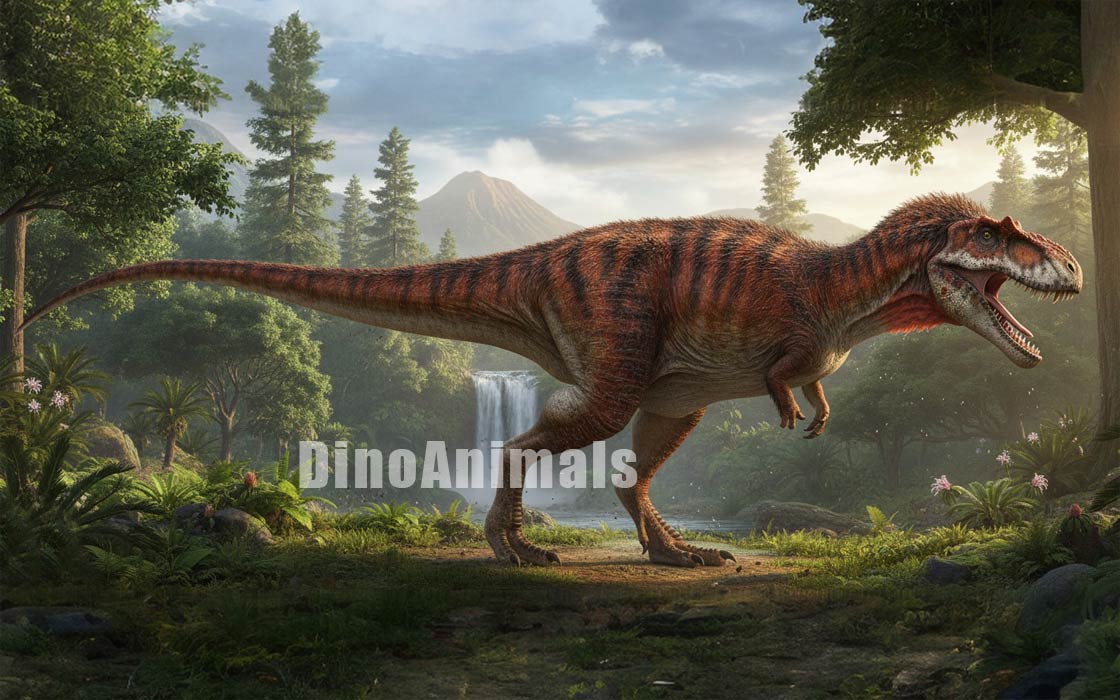Every month, 100,000 readers use the Dinosaur Database, but we receive no support from you. Developing and updating the database requires a lot of work. If you want it to remain open and be updated, please support us via the "Buy us a coffee" button available on every page or via the Support page.
Dinosaur: Labocania anomala

| Length*: | 8.8 m | 28.9 ft |
| Weight*: | 3 t | 6,614 lb |
*The largest known specimen
Period
Epoch: Late Cretaceous
Stage: Campanian
Years: 83.6–72.1 Ma
Details
Status: valid
Author: Molnar
Year: 1974
Distribution
Area: North America
Country: Mexico
Region: Baja California
Formation: La Bocana Roja
Description
Labocania anomala
Labocania anomala was a theropod dinosaur from the Late Cretaceous period, specifically the Campanian stage, around 83.6–72.1 million years ago. Discovered in the La Bocana Roja Formation of Baja California, Mexico, this dinosaur is notable for its unusual and fragmentary remains, which have made its classification difficult. The genus name Labocania is derived from the formation where the fossil was found, and the species name anomala refers to its “anomalous” features, highlighting the dinosaur’s distinct characteristics compared to other theropods.
Physical Characteristics
The fossil remains of Labocania anomala are limited to a few cranial and postcranial elements, making it difficult to reconstruct the full appearance of this dinosaur. However, based on the available material, Labocania is estimated to have been a medium-sized theropod, likely measuring around 6-7 meters (20-23 feet) in length. The largest known specimen: 8.8 m (28.9 ft). The remains include parts of the skull, teeth, and limb bones.
The skull fragments suggest that Labocania had a robust and heavily built head, potentially resembling that of large theropods such as Tyrannosaurus or Daspletosaurus. Its teeth were likely sharp and serrated, adapted for cutting through the flesh of its prey. The postcranial material, though incomplete, indicates that Labocania possessed powerful hind limbs and a strong, muscular tail, suggesting it was an agile predator capable of quick bursts of speed.
Due to the fragmentary nature of the fossil remains, the exact placement of Labocania within the theropod family tree remains uncertain. Some paleontologists have proposed that it may be a member of the Tyrannosauroidea or the Abelisauridae, based on similarities in its skull and limb structure. However, without more complete fossils, its exact relationships remain unresolved.
Diet and Feeding Habits
As a carnivorous theropod, Labocania anomala was likely an apex predator in its environment. Its sharp, serrated teeth would have been well-suited for tearing into the flesh of large herbivorous dinosaurs. Based on comparisons with other large theropods, Labocania likely fed on hadrosaurs, ceratopsians, and possibly even other theropods.
Like other large theropods, Labocania may have been an opportunistic feeder, hunting live prey and scavenging carrion when available. Its powerful legs and muscular build suggest that it was capable of pursuing prey over short distances, relying on its strength to subdue its victims.
Habitat and Distribution
Labocania anomala lived in what is now Baja California, Mexico, during the Late Cretaceous period. At that time, this region was part of Laramidia, a landmass formed by the Western Interior Seaway that divided North America into two separate continents. The La Bocana Roja Formation, where the fossils were discovered, was a coastal environment characterized by floodplains, rivers, and forests. This ecosystem supported a wide variety of plant and animal life, including large herbivores that would have been prey for Labocania.
The environment was likely warm and humid, with abundant vegetation and water sources that would have attracted herbivorous dinosaurs. Labocania would have been part of a complex ecosystem that included both predators and prey, competing with other large theropods for dominance.
Behavior and Social Structure
As with many theropods, Labocania anomala was likely a solitary hunter, although some evidence from other theropod species suggests that pack behavior may have occurred in certain circumstances. Given its estimated size and power, Labocania would have had few natural predators as an adult, but juveniles may have been vulnerable to attack by larger carnivores or other theropods.
Like other large theropods, Labocania likely relied on ambush tactics to catch its prey, using its speed and strength to overwhelm its victims. It may have used its strong jaws and teeth to deliver fatal bites, similar to other large theropods.
Discovery and Research
The first fossils of Labocania anomala were discovered in 1970 by William J. Morris in the La Bocana Roja Formation of Baja California, Mexico. The holotype specimen (CPC 297) includes fragments of the skull, teeth, and limb bones, but no complete skeleton has been found. In 1974, Ralph Molnar formally described Labocania based on these remains.
Since its discovery, Labocania has been a subject of debate among paleontologists due to the fragmentary nature of its remains. While some researchers have suggested that it may be related to tyrannosaurs or abelisaurids, others argue that the fossils are too incomplete to make a definitive classification. Ongoing research in the region aims to uncover more fossils that could provide additional information about this enigmatic theropod.
Significance and Interesting Facts
Labocania anomala is significant for its potential to provide insight into the diversity of theropods in North America during the Late Cretaceous period. Its discovery in Baja California, Mexico, adds to the growing body of evidence that Laramidia was home to a wide variety of large carnivorous dinosaurs, many of which remain poorly understood due to the limited fossil record.
One interesting fact about Labocania is that its exact classification remains uncertain, making it one of the more mysterious theropods discovered in North America. Despite its fragmentary remains, Labocania highlights the potential for future discoveries in the La Bocana Roja Formation, which may eventually reveal more about this elusive predator.
Locations
Sources
Material: Partial skull and fragmentary skeleton.
References: Molnar, R. E. (1974). "A distinctive theropod dinosaur from the Upper Cretaceous of Baja California (Mexico)".




